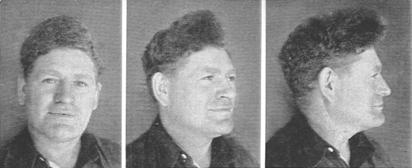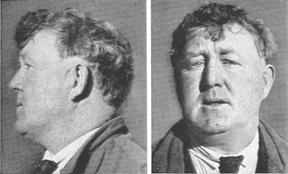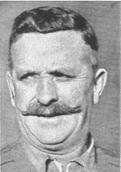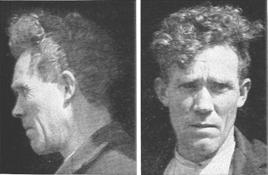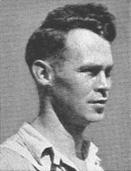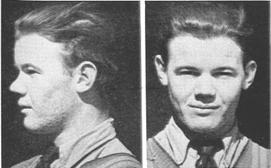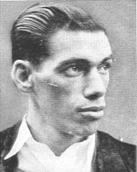|
(Photographic Supplement, Plate 9)
FIG. 1 (3 views). County Cork. A man of medium stature but great body size, massive bony structure and heavy musculature; a large head, heavy brows, deep, wide mandible and projecting chin. This individual is a close Irish approximation to the Brünn race of Scandinavia. His golden hair is curly; curly hair is a local specialty of the Irish Upper Palaeolithic group. It is also, however, occasionally found among Lapps and Finns.
FIG.2 (2 views, photo C. W. Dupertuis). County Clare. Cork, Kerry, and Clare are the three Irish counties in which unreduced Palaeolithic survivors form the major element in the population. This large individual has ahead of full Brünn-Borreby size dimensions, but one that is intermediate between the two Scandinavian types in form. This is typical of the Irish Palaeolithic group, which is characteristically mesocephalic or sub-brachycephalic and forms a single unit in this respect. The individual depicted possesses a mandible of extreme width, comparable to the widest in Scandinavia. Note that the hair is red and the complexion florid; rufosity is closely linked to Upper Palaeolithic survival in Ireland.
FIG.5 (1 view). A Finn from Vasa (S. Ostrobothnia), who is anthropometrically and morphologically very close to the Irishman from Leitrim. The same curly hair, and the same conformation of the forehead, lips, and nose have produced a striking similarity. This and other evidence indicate that features which in Finns are often popularly supposed to be mongoloid are actually of European Upper Palaeolithic inspiration.
FIG.6 (2 views, photo C. W. Dupertuis). A small-headed, absolutely short-headed and snub-nosed youth from County Longford. This individual serves as an excellent example of the extreme in size reduction and in partial foetalization which has taken place in some Irish Upper Palaeolithic survivors, comparable and parallel to the development of the Alpine race on the Continent.
|
